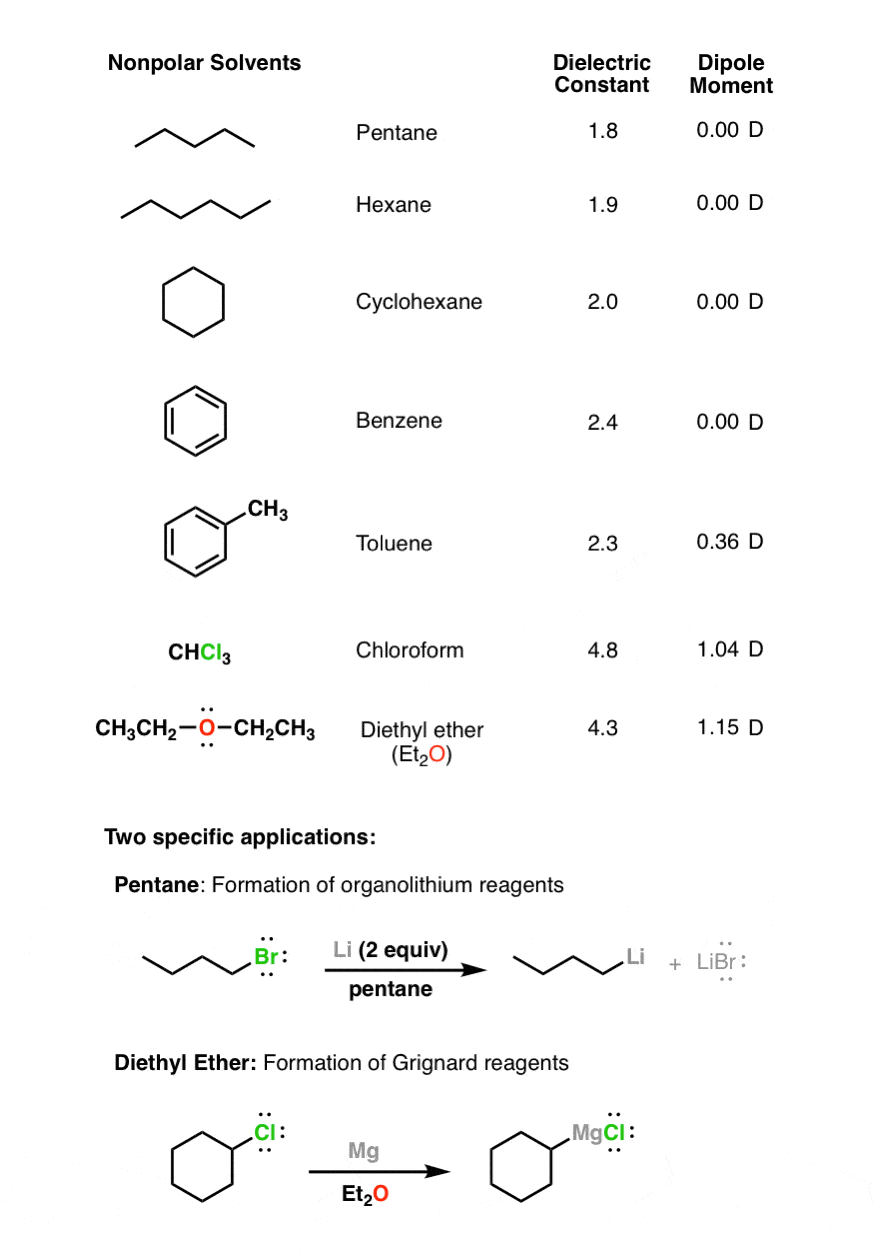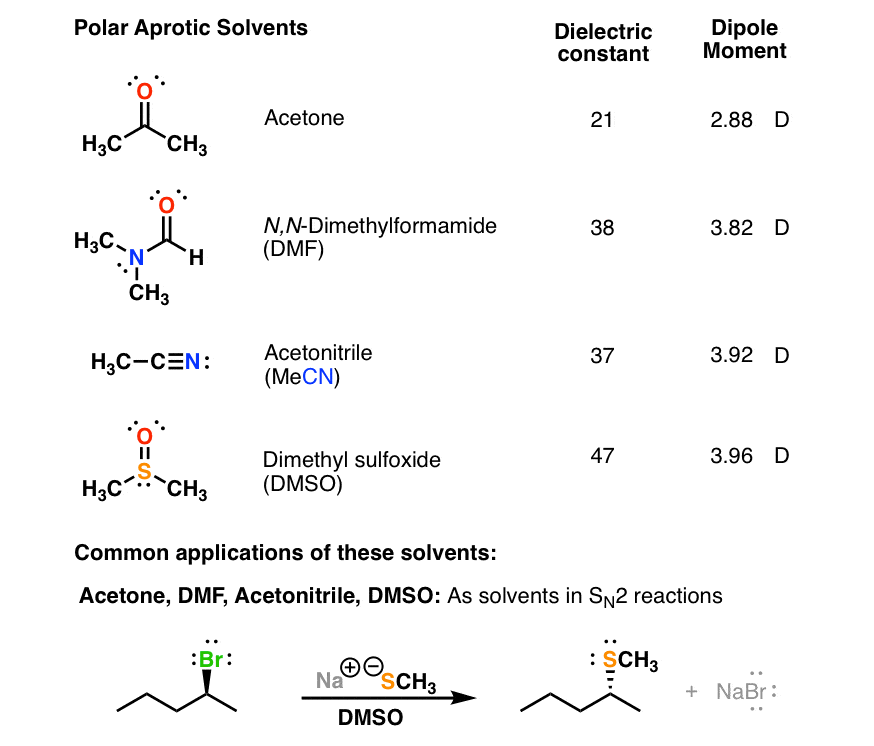Acetone Polar or Nonpolar Solvent
1 rather nonpolar and volatile solvents 2 nonpolar and nonvolatile solvents and 3 polar solvents. Water is the most common and well-studied polar solvent but others exist such as ethanol methanol acetone acetonitrile and dimethyl sulfoxide.

Polar Protic Polar Aprotic Nonpolar All About Solvents
Put your understanding of this concept to test by answering a few.

. It is not volatile but still acts as a nonpolar solvent. Polymers formed by a straightforward linking together of monomer units with no loss or gain of material are called addition polymers or chain-growth polymersA listing of some important addition polymers and their monomer precursors is presented in the following table. Take up a quiz on Organic solvents.
Solventnon-solvent binary mixtures of MEK and isopropanol MEKIpOH and MIBK and methanol MIBKMeOH were used. It can also be a solid or gas. There can be both polar and nonpolar solvents.
Place equal amounts of the substance into each beaker. Also any potential hydrogen-bond acceptor will tend to shift the water signal down-field. Generally a polar solvent will dissolve polar molecules.
Acetic acid undergoes nearly all carboxylic acid reactions. That is solutes typically will dissolve best in solvents that have the most molecular similarities. They are not.
These are solvents having a dielectric constant of more than 15. This is particularly true for nonpolar solvents. Apolar or nonpolar solvents have low dielectric constants which refers to the electric charge between the molecules being evenly distributed.
It dissolves a wide range of both polar and nonpolar soils and is often used to dissolve and remove light oils fingerprints cutting fluids flux residues carbon deposits and mold release. The nonpolar layer is referred to as the organic phase and will dissolve any nonpolar compounds. Most TLC solvent systems contain a polar solvent and a chromatographically less.
It should be noted that the latter is quite temperature-dependent videinfra. The polarity differentiation is done based on the dielectric constant of the solvents. Water as a solvent dissolves sodium chloride by breaking into ions.
A non-polar solvent will dissolve non-polar molecules. Polar solvents are often found to have a high dielectric constant although other solvent scales are also used to classify solvent polarity. Figure 635 lists some common mobile phase solvents according to their polarities.
The stationary phase in paper chromatography is water molecules found in the pores of the filter paper whereas the moving phase is a solvent such as hexane toluene acetone or a mixture of solvents such as methanol-water mixture. Water-free synthesis of Ti 3 C 2 T x MXene in ammonium dihydrogen fluoride NH 4 HF 2 dissolved in polar organic solvents eg propylene carbonate produces Ti 3 C 2 T x with a very large interlayer spacing of 21 to 51 Å depending on the solvent which was attributed to co-intercalation of NH 4 cation complexes with solvent molecules. DMSO the water is already strongly.
Solubility functions by a group of rules that determine how dissolvable a substance solute is in solvent and depends entirely on the physical and chemical properties of the solute and solvent. Typically the solvent is what everything else is dissolved into. Many polymeric materials having chain-like structures similar to polyethylene are known.
Acetone is also relatively safe organic solvent but you should still keep it away from fire and wear your mask and gloves. The polar layer is referred to as the aqueous phase and it will dissolve any polar compounds. Put the substance in question into the beaker filled with water and the beaker filled with the.
The most common three types of solvents in organic chemistry are apolar polar aprotic and polar protic. A solvent from the Latin solvō loosen untie solve is a substance that dissolves a solute resulting in a solutionA solvent is usually a liquid but can also be a solid a gas or a supercritical fluidWater is a solvent for polar molecules and the most common solvent used by living things. Acetone is a volatile compound.
In contrast in eg. Polar solvents can be used to dissolve inorganic or ionic compounds such as salts. Isopropyl alcohol CAS 67-63-0 is also referred to as IPA isopropanol 2-propanol and even rubbing alcohol more on that later.
Shifts of the solvent residual peak2 and the water peak. All the ions and proteins in a cell are dissolved in water within the cell. Acetic acid undergoes decomposition when heated above 440C to yield either methane and carbon dioxide or water and ethanone given by the equations.
As the moving phase passes through the area where the sample has been adsorbed it dissolves the components more or less quickly depending. It is also readily. Ethers are a common example of organic phases in extractions.
Acetic acid is a polar protic solvent with a dielectric constant of 62 in its liquid form. Polar solutes will dissolve better in polar solvents and nonpolar solutes will. A solvent is typically thought of as liquid and that is the most common form.
Sodium chloride has a NaCl molecule which breaks into Na and Cl- ions when dissolved in water. Owing to its ability to dissolve both polar and nonpolar compounds acetone is a strong solvent while other solvents can only dissolve one or the other. Chemicals in the nonpolar apolar classes include most of the conventional LPME extraction solvents while those in the polar solvent class include solvents used as auxiliary solutions in methods such as DLLME.
They can dissolve salts and other ionizable solutes. In the insoluble regime the polymer swelled up to. Secondly since it is miscible acetone is a strong solvent ensuring it has the potential to blend in all amounts with water.
Water is a common example of an aqueous phase in extractions. A sharp transition between complete solubility and almost total insolubility was observed in a narrow concentration range near 5050 by volume solventnon-solvent for both mixtures. These three numerically ranked solvents are.

Why Is Acetone A Good Solvent Properties Explanation Video Lesson Transcript Study Com

Polar Protic Polar Aprotic Nonpolar All About Solvents
Polar Vs Nonpolar Solvents Identifications And Examples Psiberg
No comments for "Acetone Polar or Nonpolar Solvent"
Post a Comment